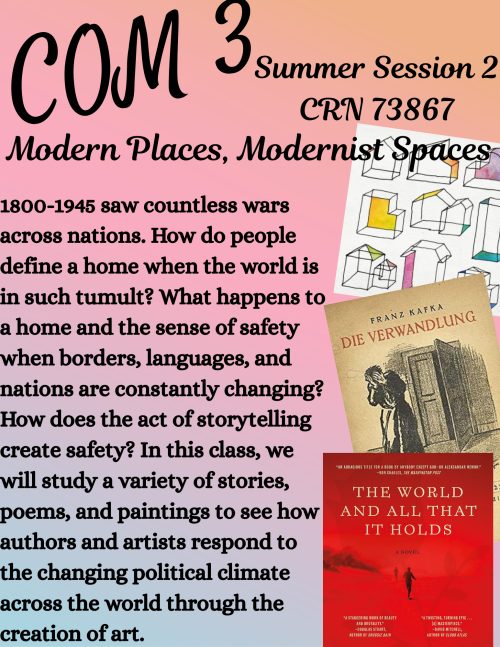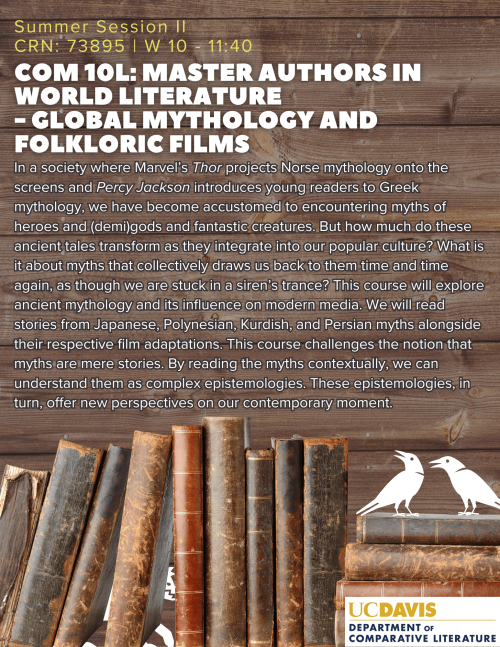Summer Session 2025
- For day, time, room, and TA information, see our:
PDF Schedule-Session 1 , PDF Schedule-Session 2 , or Schedule Builder - For all courses not described here, see:
Catalog Descriptions
Summer Session I
COM 004—Major Works of the Contemporary World (Sino-American Literature and Film)
Benjamin Fong
This course explores the intersections of race, culture, and identity through Asian American, Chinese, and Sino-American literature and film. Divided into three thematic sequences, it begins by examining how “Asian American” has been constructed through Who Killed Vincent Chin? (1987) and Interior Chinatown (2020). The course turns to different paradigms of “Chinese film,” exploring how nation and ethnicity are constructed in Crouching Tiger, Hidden Dragon (2000) and In the Mood for Love (2004). Finally, it considers cultural hybridity and the complexities of race and identity across borders in “Sino-American films” such as Saving Face (2004) and Didi (2024).

Summer Session II
COM 003 — Major Works of the Modern World: Modern Places, Modern Spaces
Sicily Lerner
1800-1945 saw countless wars across nations. How do people define a home when the world is in such tumult? What happens to a home and the sense of safety when borders, languages, and nations are constantly changing? How does the act of storytelling create safety? In this class, we will study a variety of stories, poems, and paintings to see how authors and artists respond to the changing political climate across the world through the creation of art.

COM 007V — Literature of Fantasy & the Supernatural
Michael Subialka
COM 010L — Master Authors in World Literature: Global Mythology and Folkloric Films
Elmira Louie

In a society where Marvel’s Thor projects Norse mythology onto the screens and Percy Jackson introduces young readers to Greek mythology, we have become accustomed to encountering myths of heroes and (demi)gods and fantastic creatures. But how much do these ancient tales transform as they integrate into our popular culture? What is it about myths that collectively draws us back to them time and time again, as though we are stuck in a siren’s trance? This course will explore ancient mythology and its influence on modern media. We will read stories from Japanese, Polynesian, Celtic, Kurdish, and Persian myths alongside their respective film adaptations. This course challenges the notion that myths are mere stories. By reading the myths contextually, we can understand them as complex epistemologies. These epistemologies, in turn, offer new perspectives on our contemporary moment.
